- Home
- Jason Webster
Sacred Sierra
Sacred Sierra Read online
Contents
Cover
About the Book
About the Author
Praise
Map
Dedication
Title Page
Epigraph
Beginning
Part I: EARTH
The Story of St Peter and the Fig Trees
September: Late figs; almond harvest; running with fire-ball bulls
The Story of Mig Cul Cagat
October: Our first bees; mushroom picking; wild-boar hunters
The Story of Old Mother Misery and the Pear Tree
November: Dinosaur bones; truffle-tree planting; ‘purifying’ the land
Part II: AIR
The Story of the Charcoal-Burner’s Daughter
December: Olive harvest; mistletoe; a fight to the death
The Story of the Devil and the Carob Tree
January: Truffle market; the names of the winds; the Feast of San Antoni
The Story of the Knight Templar and the Moorish Girl
February: Almond blossom; the mysterious cave; how to lose a roof
Part III: WATER
The Story of the Parrot
March: Strange lights; more tree-planting; the valley of the curse
The Story of the Three Lemons of Love
April: Olive-tree pruning; the Pilgrimage of Les Useres; the secret rite
The Story of the Golden Bull
May: Gathering honey; cooking with snails; the coming of the rains
Part IV: FIRE
The Story of the Horse’s Leap
June: A part-time hermit; summer arrives; the night of San Juan
The Story of how the Rosemary Flower turned Blue
July: Iris-planting; making moonshine; a hidden tobacco field
The Story of the Three Pieces of Advice
August: The Tears of San Lorenzo; the ice-house; a forest fire
Beginning, Again
Coda: The Trees
Note on Language
Acknowledgements
Index
Copyright
About the Book
This is a romantic, utterly alluring leap into Spanish sunshine, remote mountains and rural life. Jason Webster had lived in Spain for several years before he and his partner, the flamenco dancer Salud, decided to buy a deserted farmhouse clinging to the side of a steep valley in the eastern province of Castellón, near the sacred peak of Penaglosa. With help from local farmers – and from a twelfth-century Moorish book on gardening – Jason set about creating his dream. He had never farmed before, and knew nothing of plants, but slowly he and Salud cleared the land, planted and harvested their olives, raised the healing herbs they learned about from local people, set up bee-hives and nurtured precious, expensive truffles, the black gold of the region. And beyond all this they started to fulfil another vision, bringing the native trees back to the cliffs ravaged by fire.
At the same time they became drawn into the life of the valley: this is a book rich with characters as well as plants. It follows the people of the village from the winter rains to baking summer heat, from the flowering of the almond trees in spring to the hilarious, fiery festivals and ancient pilgrimages, and tells the history of the region through folk-songs and stories of the Cathar and Templar past. Jason and Salud lived through storms that destroyed their roof and fire that swept across their valley, but as the year passed and his farm flourished Jason found himself increasingly in tune with the ancient, mystical life of the sierra, a place that will haunt your imagination and raise your spirits, as it did his.
About the Author
Jason Webster was born near San Francisco and brought up in England and Germany. After spells in Italy and Egypt, he moved to Spain. Duende: A Journey in Search of Flamenco was described as ‘a great book’ by the Guardian and ‘mesmerising’ by the Sunday Times, while Andalus: Unlocking the Secrets of Moorish Spain and Guerra: Living in the Shadows of the Spanish Civil War were also critically acclaimed. He has appeared in several TV documentaries on Spain and written for the Observer, Sunday Times, Guardian and New Statesman. He lives in Spain with his wife, Salud, an actress and flamenco dancer from Valencia.
‘Highly readable … hugely informative … everyone’s dream of the good life without sentimentality or unrealistic expectations’
Country Life
‘Entertaining, accessible and sincere’
Rory MacLean, Guardian
‘Webster offers both the humorous depictions of local traditions and idiosyncratic figures that we might expect, and a more searching Sebaldian perception of historical events that have shaped society’
Irish Times
‘Webster has the endearing writer’s knack of making us laugh and weep along with him … written in the sympathetic tradition of Chris Stewart’s best-selling Driving Over Lemons, but is even better’
Sunday Telegraph
‘If you’ve read any of Webster’s books on Spain you’ll know he has a natural empathy for the people and their culture. In Sacred Sierra he describes a year living in the rural heart of the country. He and his girlfriend bought a run-down farmhouse and tried to build the perfect retreat. They knew nothing about farming but, with a little local help, managed to cultivate olives, almonds and truffles. It was back-breaking work, but Webster makes it sound utterly seductive’
Mail on Sunday
A Salud, con todo mi amor
Today is your day! Your mountain is waiting. So … get on your way!
Dr Seuss
De medico, poeta y loco
todos tenemos un poco.
‘we all have a bit of a doctor, poet
and madman in us.’
Spanish proverb
BEGINNING
The old farm was a mess. Some of the roofs had fallen in and thick brambles had taken over most of the garden. There was no electricity and the nearest water came from a spring a ten-minute walk away on the other side of a deep gorge. But a magnificent three-hundred-year-old oak tree shaded the front patio, while the south-facing view down the valley, with a whitewashed Spanish village perfectly framed in the distance, was the kind I had only dreamed of. There were more than a hundred almond trees and a small olive grove – enough to produce a few litres of oil.
I was no farmer and nor was Salud; both of us were more used to city life, and neither her life as a flamenco dancer nor mine as a writer had really prepared us for something like this. What would we do with forty acres of steep, rocky land? Crumbling dry-stone walls would need repairing; whole fields needed clearing of thick, prickly gorse and a dozen species of weed I couldn’t even identify. Could we really take this on?
I turned the question over in my mind as we headed slowly back to the house, convincing myself it was a crazy idea. The elderly farmer selling the place paused and looked up at a large outcrop of rock rising above us and I followed his gaze. Wild fig trees dotted its slopes, the orange and grey cliff-side reflecting the mellow light of the evening sun. Swallows were darting in and out of its crevices in search of insects, while ancient terraces climbed almost to the top, like steps, just visible behind a blanket of wild vegetation after years of neglect, then stopped where the slope had became too steep to build any more. It was a beautiful sight, multi-textured shadows lengthening across its craggy face.
‘The farmhouses where we’re standing are at seven hundred metres,’ the old man said. I did a quick calculation in my head: over two thousand feet. ‘Eixa,’ he went on, pointing up at the cliff with his gnarled walking stick, ‘es la vostra muntanya. That is your mountain.’
And suddenly the choice became no choice at all.
*
This is the tale of two mountains: one a sacred peak near the Spanish Mediterranean coast, a place of
legends and stories, of ancient kings and popes, home to great pine and oak forests and the birthplace of life-giving rivers. And another much smaller mountain, a fold in the rock on the edge of the first, barely warranting a name, which became our home and the setting for a new life, and a garden that we slowly tried to cultivate around us. It is a tale of how we learned about the earth pressing between our fingers, both its workings and its mysteries, its dangers and the gifts it offered. And of how the mountain became part of our lives.
The original idea was simply to find a quiet bolthole in the country to do some writing. The city where we lived was hot and noisy: I wanted somewhere cooler in the hills to escape the suffocating summers on the coast.
Spain was at the centre of my life. After fifteen years living here I’d written three books about my experiences and exploration of it, from the dreamy pull of the Alhambra in Granada to the passion and other-worldly exoticism of flamenco. I’d fallen in love with Spanish food and wines, its music and art; the language, with its graphic, usually scatological swearwords, had penetrated deep into my psyche and become the common idiom of my dreams. Even the darker, crueller side had fascinated me, leading me to travel around the country investigating the deep wounds remaining from the civil war.
Now I was settled in the city of Valencia, on the east coast, the home town of my partner, Salud, a flamenco dancer and actress. We had a small flat where my books filled every wall space, with a tiny area left over for her to rehearse, padding the tiled floor wearing thick socks so as not to annoy the neighbours downstairs. Valencia was a sunny, lively place, set on the Mediterranean. The people were proud of their own culture and language and usually ready with a smile and talk of the paella they would be making for the family lunch that coming Sunday.
But for all its charm, Spain had changed since I had first moved there. Back in the early nineties the country was still at the tail end of the party that had broken out when the Franco regime had finally been removed and democracy took root. Sleep was something reserved for the elderly or infirm: you were expected, almost as an article of faith, to go out and dance, drink, laugh, eat and consume substances of questionable legality until dawn at least, and often beyond. And that was just on the week days. Simply stepping outside your door felt like an adventure, a journey into a wild, creative playground. There were few rules or regulations: everyone smoked, as though their lives depended on it, from the fishmonger at the market, dropping his cigar ash on to the freshly caught monkfish on his ice display, to the girl sweeping up the street, and the car mechanic, bending over oily and highly explosive engine parts with the dull burning glow of his Ducados inches away from sending him and his garage to kingdom come. There was a healthy disrespect for authority: many of my friends had been driving for years without ever having a lesson, let alone passing their test. After decades of strict autocratic rule, cheating your way through life was looked upon as something worthy and respectful. The deep-rooted anarchic individualism of the Spaniard blossomed during those years. It was the time of the first Almodóvar films; the great flamenco singer Camarón de la Isla was still alive; and Freddie Mercury and Montserrat Caballé were booming out Baaarcelona for the Olympics. Everything was on the up. Booze was cheap. Life was good.
Almost imperceptibly, however, this had begun to fade. Spain, a unique, special country, happily semi-detached from the rest of Europe, was beginning to conform. It began with small, seemingly insignificant things: there was a shop round the corner from us that had only sold potatoes. I used to marvel that such a place could exist; this was no specialist potato boutique: it only sold one variety – the ones dug out of the owner’s plot of land the morning before. Yet still, there it was. One day, though, it didn’t open. And the shutters stayed down for months until an estate agent opened in its place. Other odd little shops soon followed suit: the haberdasher’s, the knife-sharpener’s, a shop which only sold dried pulses, all closed within the space of a year or so. In each case the owners were getting on and their children didn’t want to take over a loss-making, anachronistic concern. And each time what had once been a unique little corner was turned into a bank, or an estate agent, or a hairdresser’s – lining the streets with their blandness.
The change in bar opening hours was what alerted me next. Spain was often lauded as the bar capital of the world. It had a healthy twenty-four-hour drinking culture, with none of the bingeing you associate with some countries. Suddenly, though, where once you were regarded as either strange or unwell if you headed home before five in the morning, we were being turfed out at half-past one. No one was quite sure how this had happened, but people mumbled darkly about new European Union legislation before trundling off into the shadows. The world was changing and Spain was being dragged along in its wake, but nobody could explain why.
The realisation that something was truly wrong came when people started to talk seriously about a possible end to bullfighting. It is impossible fully to understand Spanish culture without knowing something about los toros. Even if most people in the country don’t even watch it, bull-lore is part of the country’s DNA. Life itself is viewed as a variant on the lidia, each person facing the world and what fate throws at him like the torero in the ring staring down the deadly beast sent to challenge him. The language of bullfighting peppers everyday speech, while bull-running is the most important fiesta of the year in thousands of towns and villages. That bullfighting should cease to exist was unthinkable: it was the country’s great in-built defence system against the safety culture that was slipping in from across the Pyrenees. How could ‘health and safety’ ever become an issue in a place where throwing yourself into the path of a horned animal weighing over half a tonne was an honoured national pastime? But there it was: audience figures were down; certain ministers in Madrid were talking in private about ‘modifications’ to the bull fiestas; the city of Barcelona was toying with an outright ban.
The strangeness of Spain had always attracted me. I’d often felt it had something of a fairy-tale air about it, as though by living here you came as close as it was possible actually to stepping inside a magical world of spirits and ghosts, of evil monsters and wise old kings. There had always been an earth-wisdom about the people and the place, a sense of what was truly right or wrong in any situation, beyond superficial judgements. It was a country where to be ‘well-educated’ referred to polite and correct behaviour towards other human beings, not whether you’d read more books than the person standing next to you. And I loved all this about it. Yet now it felt under threat. Urban, modern Spain seemed to be losing the very charm that had made it different. The spark was dulling; it was losing its rawness and becoming ever more regimented – something I had come here to escape.
Up there in the hills, though, I was sure, the tide was being held back – just.
Salud needed to stay fairly close to the city for her work. So, not wanting somewhere too far away, our search took us north and inland into the neighbouring province of Castellón, one of the last undiscovered areas of Spain. So far, only a relatively small section of the province’s thin strip of coastline had been developed for tourism, but few people ever made it past the ceramics factories behind the beaches and up into the magical mountains that lay beyond. To do so was to enter a land of hilltop villages, hidden monasteries and thick pine forests. It was a world of myths and legends, of medieval knights and bizarre heretical sects, the last refuge of the Cathars, and a heartland of the ancient and mysterious Iberians.
The area was a complex patchwork of former counties and ancient fiefdoms, each with their own character and dialects, strengthened by the poor communications between them and by the difficult terrain. The central axis of the region was Penyagolosa, the highest mountain in the province. Much of the area around it was at mountain height – over 2000 feet, or 600 metres – but the peaks were still quite low, perhaps around 1000, or 1200 metres at most. Penyagolosa – the sweet-toothed, or hungry mountain, as its name suggested – rose above this
, however, and sat much like the mountain of a child’s drawing, a triangular peak stretching above the rest to over 1800 metres – just under 5500 feet. It wasn’t an Everest, or even a Mont Blanc, but here, as the highest mountain around, it was greatly loved. It was the furthest reach of the East Iberian Mountains, the chain that gave the backbone to the Iberian Peninsula, snow-capped in winter and baked dry in summer, its broken triple peak – like a crown – slashed sideways by a red clay deposit sandwiched between its pale limestone layers. Viewed from some angles it looked almost like a hawk taking off in flight. Penyagolosa was what made the land, what gave it its special encant, or magical charm.
To the south of it lay the area known as the Alcalatén – from the Arabic meaning ‘the Two Castles’ – while the pine forests of the Gúdar and Alt Millars stretched out to the west. To the north sat the harsh plains of the Maestrazgo, or Maestrat in Valencian. The name originated from when the area was first conquered from the Moors, back in the thirteenth century. King James I handed the region over to two orders of Knights – the Templars and the Hospitallers – in gratitude for their assistance during the campaign. As the head of an order was known as a maestre, or ‘master’, the area under their control became the maestrat – the ‘land of the masters’.
Nowadays the Penyagolosa area is a rough, unspoilt part of the country, sparsely populated, with a few small towns dotted here and there – many unchanged for centuries. It is the kind of place where turning any corner might bring you to a deserted medieval village, or else a monastery or hermitage tucked away in some forgotten corner, perhaps shaded by an ancient elm or yew tree.
The legacy of the traditional, rural way of life is still visible across the countryside in the thousands of small farms – masos – often grouped into little hamlets of half a dozen or so houses. Most have been abandoned as the rural economy suffered during the 1960s and 1970s. Many of the farms you encounter when out walking stand as the last occupants left them, with clothes hanging from wooden pegs on the wall and newspapers or copies of ¡Hola! dating from the time lying scattered on the floor. The weather has taken its toll, and many buildings are slowly falling down, or in some cases lying in ruins.

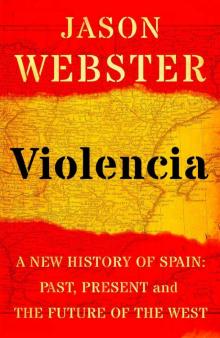 Violencia
Violencia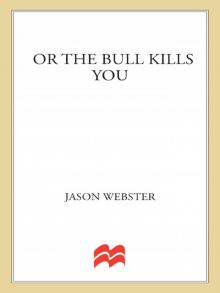 Or the Bull Kills You
Or the Bull Kills You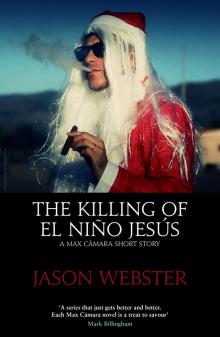 The Killing of El Niño Jesús
The Killing of El Niño Jesús The Spy with 29 Names
The Spy with 29 Names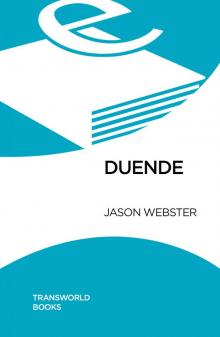 Duende
Duende Guerra
Guerra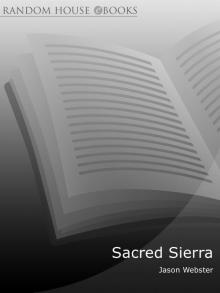 Sacred Sierra
Sacred Sierra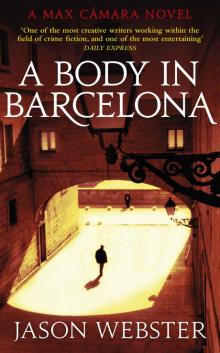 A Body in Barcelona: Max Cámara 5
A Body in Barcelona: Max Cámara 5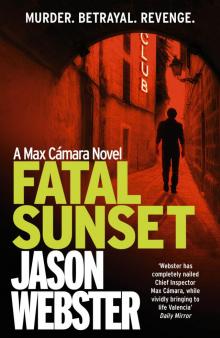 Fatal Sunset
Fatal Sunset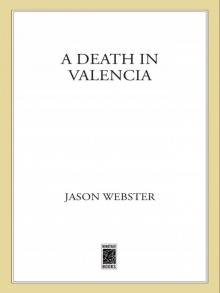 A Death in Valencia
A Death in Valencia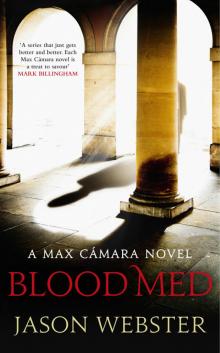 Blood Med
Blood Med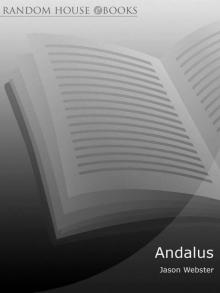 Andalus
Andalus